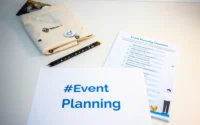- Home
- Articles
- Architectural Portfolio
- Architectral Presentation
- Inspirational Stories
- Architecture News
- Visualization
- BIM Industry
- Facade Design
- Parametric Design
- Career
- Landscape Architecture
- Construction
- Artificial Intelligence
- Sketching
- Design Softwares
- Diagrams
- Writing
- Architectural Tips
- Sustainability
- Courses
- Concept
- Technology
- History & Heritage
- Future of Architecture
- Guides & How-To
- Art & Culture
- Projects
- Interior Design
- Competitions
- Jobs
- Store
- Tools
- More
- Home
- Articles
- Architectural Portfolio
- Architectral Presentation
- Inspirational Stories
- Architecture News
- Visualization
- BIM Industry
- Facade Design
- Parametric Design
- Career
- Landscape Architecture
- Construction
- Artificial Intelligence
- Sketching
- Design Softwares
- Diagrams
- Writing
- Architectural Tips
- Sustainability
- Courses
- Concept
- Technology
- History & Heritage
- Future of Architecture
- Guides & How-To
- Art & Culture
- Projects
- Interior Design
- Competitions
- Jobs
- Store
- Tools
- More
Emergency Preparedness 101: Essential Steps for Safeguarding Your Home and Family

Emergency preparedness is a crucial aspect of ensuring the safety and well-being of individuals and families.
With the right knowledge and preparation, you can significantly mitigate the impacts of disasters and emergencies, protecting what matters most.
Table of Contents
ToggleUnderstanding the Risks
Different geographic areas face unique risks. Whether it’s the threat of hurricanes, earthquakes, floods, or cyber incidents, understanding the specific emergencies that can affect your area is the first step in preparation.
Ready.gov lists a comprehensive range of disasters, from natural to human-made, highlighting the importance of being aware of local risks to tailor your emergency plans effectively.
Creating an Emergency Plan
Steps to Develop a Comprehensive Emergency Plan for Families
- Identify Hazards: Based on your local risk assessment, determine what types of disasters are most likely to occur in your area.
- Family Communication Plan: Establish a communication plan that includes emergency contacts, a central meeting point, and a clear method for checking in with each other.
- Evacuation and Shelter: Know when and how to evacuate, including the routes and locations of shelters.
- Special Considerations: Plan for members with special needs, pets, and how to turn off utilities.
- Practice Your Plan: Regularly review and practice your plan to ensure everyone knows what to do.
The importance of having a well-thought-out communication plan and predetermined meeting points cannot be overstated. It ensures that, even in the chaos of a disaster, families can reunite and maintain contact.

Building an Emergency Kit
Essential Items to Include in a Home Emergency Kit:
- Water: At least one gallon per person per day for at least three days.
- Food: A three-day supply of non-perishable food items.
- Battery-powered or hand crank radio: To stay informed about emergency alerts and updates.
- Flashlight and extra batteries: For navigating in the dark.
- First aid kit: To address minor injuries and health emergencies.

- Whistle: To signal for help if needed.
- Dust masks: To filter contaminated air.
- Plastic sheeting and duct tape: For creating a shelter-in-place.
- Moist towelettes, garbage bags, and plastic ties: For personal sanitation.
- Wrench or pliers: To turn off utilities.
Recommendations for Additional Items Based on Specific Needs:
- Medications: A seven-day supply of prescription medications and any necessary over-the-counter medications.
- Glasses and contact lens solution: If applicable.
- Pet supplies: Including food, water, and other necessities for your pets.
- Important family documents: Copies of insurance policies, identification, and bank account records in a waterproof container.
Securing Your Home
Tips for Making Your Home Safer During Emergencies:
- Structural reinforcements: Consider retrofitting your home to improve its resistance to earthquakes, floods, or windstorms, depending on your area’s risk.
- Hazard removal: Secure heavy furniture to walls and place heavy items on lower shelves to prevent injury during an earthquake.
- Fire safety: Install smoke alarms on every level of your home and test them monthly.
Guidance on Utility Management During a Disaster:
- Know how to turn off your utilities: Familiarize yourself with the locations of your main water shut-off valve, electrical panel, and gas valve, and learn how to turn them off safely.
- Electrical safety: If you evacuate, turn off electricity at the main breaker to prevent damage from power surges.

Learning Key Survival Skills
Overview of Basic Survival Skills Everyone Should Know:
- First Aid: Basic skills to treat wounds, burns, and other common injuries.
- Fire Safety: Knowing how to prevent fires and what to do in case one occurs.
- Water Safety: Understanding how to find and purify water.
Resources for Learning These Skills:
- Local courses: Many communities offer first aid, CPR, and disaster preparedness courses through organizations like the Red Cross, community colleges, and local emergency management offices.
- Online resources: Websites like Ready.gov provide a wealth of information on preparedness steps and survival skills. Online courses and tutorials can offer training in specific areas of interest. For instance, the American CPR Care Association offers CPR first aid card online.
By equipping your home with a well-stocked emergency kit, securing your living space against potential hazards, and acquiring key survival skills, you’re taking significant steps toward safeguarding your home and family against emergencies.
The time and effort invested in these activities not only prepare you for unexpected events but also provide peace of mind knowing that you’re ready to face whatever challenges may arise.
Staying Informed
Importance of Staying Updated with Local News and Alerts
Staying informed about local news and emergency alerts is critical during disasters. It enables you to receive timely information about the nature of the emergency, recommended protective actions, and evacuation orders. Being well-informed helps you make informed decisions to protect yourself and your family.
Tools and Services for Emergency Alerts and Updates
- Wireless Emergency Alerts (WEA): These are emergency messages sent by authorized government alerting authorities through your mobile carrier.
- NOAA Weather Radio (NWR): Provides continuous weather information, including emergency alerts about natural and environmental disasters.
- Local News Outlets: TV and radio stations often provide crucial local emergency updates.
- FEMA App: Offers real-time alerts from the National Weather Service, disaster safety tips, and locations of nearby shelters.
Community Resources and Support
Information on Local Emergency Services and Support Networks
Local emergency services, including fire departments, police stations, and hospitals, are vital resources during a disaster.
Local governments and organizations like the American Red Cross or community centers often provide support networks and resources.
How to Get Involved in Community Preparedness Efforts
- Community Emergency Response Teams (CERT): Training through CERT programs can help you assist others in your community during a disaster when professional responders are not immediately available.
- Volunteering: Many organizations seek volunteers for disaster response and recovery efforts. Volunteering is a great way to contribute to community resilience.
Starting Your Prepping Journey
Practical First Steps for Individuals and Families Beginning Their Emergency Preparedness Efforts:
- Assess your needs: Consider the specific needs of your household, including pets, children, and any medical requirements.
- Start small: Begin by assembling a basic emergency kit and creating a simple plan. Over time, you can add to your kit and expand your plan.
- Educate yourself: Learn about the hazards that are most relevant to your area and the basic steps of disaster preparedness.
How to Gradually Build Up Supplies and Knowledge Over Time:
- Incremental purchasing: Add a few items to your emergency kit each time you go shopping.
- Continuous learning: Take advantage of free resources and training opportunities to enhance your knowledge and skills in preparedness.
Preparedness is a continuous process. As you learn more and your circumstances change, adjust your plans and supplies accordingly. The goal is not to prepare for every possible scenario but to be ready to adapt and respond to the emergencies most likely to affect you.
Final Remarks
Embarking on the journey of emergency preparedness might seem daunting at first, yet it is an essential step towards ensuring the safety and resilience of your home and family against unforeseen disasters.
Engaging with community resources not only enhances your preparedness but also contributes to the broader network of support and resilience.
Preparedness is not a one-time effort but a continuous commitment to safeguarding your loved ones and community. Start small, stay informed, and gradually build your resilience; your future self will thank you for taking action today.
illustrarch is your daily dose of architecture. Leading community designed for all lovers of illustration and #drawing.
Submit your architectural projects
Follow these steps for submission your project. Submission FormLatest Posts
Tips for Using Runners to Transform Hallways and Spaces
Hallways work hard. They handle daily foot traffic, muddy shoes, and the...
Essential Architecture Tools in 2026: Software, AI, and Physical Equipment
Architecture in 2026 demands more than design talent alone. From BIM and...
Light of Tomorrow by VELUX 2026
This competition encourages architects to design visionary spaces where natural light drives...
Top 10 Online Platforms to Find Apartments for Rent in San Antonio
San Antonio, Texas, with its vibrant culture, historical landmarks, and strong job...











Leave a comment